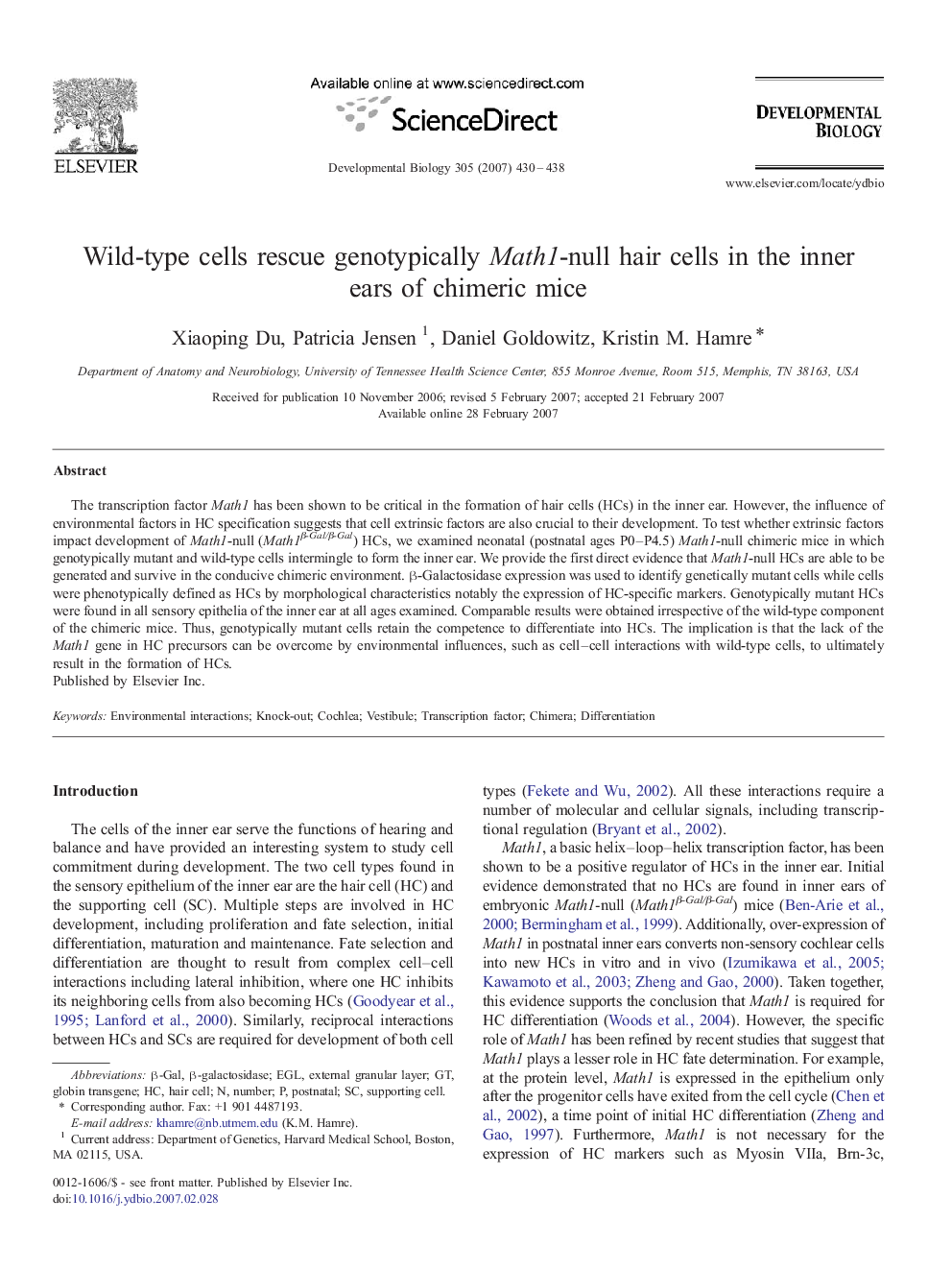| Article ID | Journal | Published Year | Pages | File Type |
|---|---|---|---|---|
| 2175325 | Developmental Biology | 2007 | 9 Pages |
The transcription factor Math1 has been shown to be critical in the formation of hair cells (HCs) in the inner ear. However, the influence of environmental factors in HC specification suggests that cell extrinsic factors are also crucial to their development. To test whether extrinsic factors impact development of Math1-null (Math1β-Gal/β-Gal) HCs, we examined neonatal (postnatal ages P0–P4.5) Math1-null chimeric mice in which genotypically mutant and wild-type cells intermingle to form the inner ear. We provide the first direct evidence that Math1-null HCs are able to be generated and survive in the conducive chimeric environment. β-Galactosidase expression was used to identify genetically mutant cells while cells were phenotypically defined as HCs by morphological characteristics notably the expression of HC-specific markers. Genotypically mutant HCs were found in all sensory epithelia of the inner ear at all ages examined. Comparable results were obtained irrespective of the wild-type component of the chimeric mice. Thus, genotypically mutant cells retain the competence to differentiate into HCs. The implication is that the lack of the Math1 gene in HC precursors can be overcome by environmental influences, such as cell–cell interactions with wild-type cells, to ultimately result in the formation of HCs.
